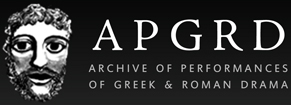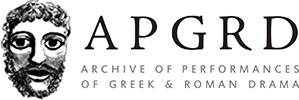A guest post by Estel Baudou, Alison Middleton, and Marcus Bell
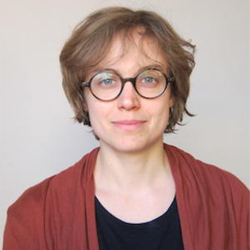
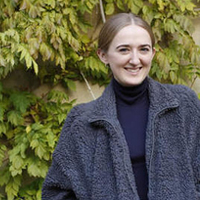
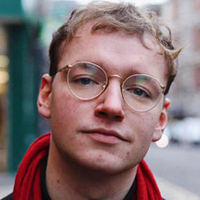 On 26 September 2019 the APGRD hosted Beyond the text: Chorus in the twenty-first century - a lecture-performance of choruses from Euripides’ Medea. This event was the culmination of a week-long workshop by professional dancers and students, rganised and co-directed by Dr Marie-Louise Crawley (choreographer), Struan Leslie (Dramaturg, Movement Director), and Malcolm Atkins (Composer). Here, three participants share their memories and thoughts from the experience.
On 26 September 2019 the APGRD hosted Beyond the text: Chorus in the twenty-first century - a lecture-performance of choruses from Euripides’ Medea. This event was the culmination of a week-long workshop by professional dancers and students, rganised and co-directed by Dr Marie-Louise Crawley (choreographer), Struan Leslie (Dramaturg, Movement Director), and Malcolm Atkins (Composer). Here, three participants share their memories and thoughts from the experience.
Listen to an accompanying podcast episode with Struan Leslie and Estel Baudou is available here >>

"Now, our chorus is an archive, a storehouse of memory. We borrow words and phrases of movement from each other, echoing, refracting, and simulating meaning through space. This allows us to recall actions from the previous day, to go to where someone lay on the floor, and lie there now, ourselves. A chorus holds all of these physical memories as well as its verbal stories, of migration, transformation, and revenge. Because, the distance between the story in the body and through the voice is one we conceptualise"
Throughout the workshop we brought together fragments of bodily understanding; we have sought to convey this sense of the fragmentary and the physical coming together - a literal re-membering - in the format of these recollections.
Is the chorus its own choreographer? Can the chorus dance itself?
Speaking and being silent together. Moving and staying still together.
As Struan likes to say, a chorus is made of people involved in the same situation. Its members are both co-active and co-passive. As performers we were spontaneously doing things all together. But we discovered in the improvisations how stillness and silence could be collective experiences.
As Alice Oswald commented:
Dance is like poetry. It is in the space between the text where the body lives.
The Actor and the Über-Marionnette, Edward Gordon Craig, 1907
“The actor must go, and in his place comes the inanimate figure—the Über-marionette we may call him, until he has won for himself a better name. Much has been written about the puppet, or marionette. There are some excellent volumes upon him, and he has also inspired several works of art. Today in his least happy period many people come to regard him as rather a superior doll—and to think he has developed from the doll. This is incorrect. He is a descendant of the stone images of the old temples—he is today a rather degenerate form of a god. Always the close friend of children, he still knows how to select and attract his devotees. When anyone designs a puppet on paper, he draws a stiff and comic- looking thing. Such a one has not even perceived what is contained in the idea which we now call the marionette. [...] There is something more than a flash of genius in the marionette, and there is something in him more than the flashiness of displayed personality. The marionette appears to me to be the last echo of some noble and beautiful art of a past civilization. But as with all art which has passed into fat or vulgar hands, the puppet has become a reproach. All puppets are now but low comedians. […] I pray earnestly for the return of the image—the über-marionette to the Theatre; and when he comes again and is but seen, he will be loved so well that once more will it be possible for the people to return to their ancient joy in ceremonies—once more will Creation be celebrated—homage rendered to existence—and divine and happy intercession made to Death.”
Performances beyond the stage
We learn that chorus-making infiltrates the academic practice of Classics, English, but also of the scientific lab, and the ecologically generated biosphere. We find out that the chorus itself is about dissent as well as assent, and that supported audible disagreement can be more generative than mimicry. If we realise through the chorus that we can be many before we feel like one, then it also shows us how to be many together as a collective we must first remove the ability for there to be one singularity overruling it. To choreograph itself the chorus must balance the act of writing and moving between all of its constituent parts, and in this way perform its displacement of ‘author, choreographer but also dancer’.*
What are the facts? What are the questions?
When Marie-Louise says: I can see the women of Cornith
After a full afternoon of exercises, the chorus existed. We were the chorus of Corinthian women. However, none of us had been trying to be one of the women and none of us was already one of them. Throughout dancing improvisations, we first built a collective body before embodying any character.
Topography of Medea
One of the dancers, Amy, states that she is looking for specificity when she moves. Her efforts in dance support her to answer different research questions and find the clearest answers. She notes that for her rhythm is the motivation for movement and this can come from music and/or text. With bodies as our voices, rhythm became our grammar, and each breath was the length of an idea. Because, if the breath supports the body through a line of speech, then an idea is the length of the breath from start to end. This is how we write through space, and describe the topography of Medea.
What is the body's voice?
Dis-member and re-member
During this workshop, Euripides text has been engraved in our bodies because we have been talking about lines as tattoos written on very specific parts of our bodies and able to make us move. While embodying the text like that, we were dismembering it and the stasimon was torn apart. However we weren’t perpetrating a sparagmos as KM Grüber or R Schechner did in the 70’s. Indeed, the text was divided between our individual tattoos but dancing together was an attempt to gather the lines together, so as one may be able to read all the text on the collective body of the dancing chorus. So, we were not aiming to dismember the text but rather trying to collectively re-member it.
Texts as tattoos
On the first day we had all struggled with the English translation, but the next morning Shelly said that she wanted to have one of the lines tattooed on her body. This sparked a discussion which spanned the whole week about what we each might choose to have tattooed, and where. The difference between how the Greek and the English etched themselves onto or into us, and how they could be seen and felt in our bodies. The English ‘otherwise we could have answered with songs’ twisted itself around my torso and spine making me stretch and turn to reveal it. It was uncomfortable. The Greek was different - lodging itself like an inscription on my arms and chest. It was funny that many of our Greek tattoos were on our skin and the fronts of our bodies, more external than the English. At this point in the process, after our emotive work on protest, the Greek tattoos were our placards, and our bodies had become our voices.
Tattoos as wounds
These tattoos were engravings, yes, but they were wounds before that. Because, in the days after the needle has pierced your skin it remains open to the air, gasping ink. Shelly holds out her forearms into the space. A terrible vulnerability, and I sink to my knees, the space on my right forearm where I have a triangle inked glows red. I lift my palms to the ceiling as her. My Greek tattoo leaks ink, packed in too tightly, down my neck, as Shelly and I both twist, stumble, wrench out of the space, calling for Medea.
We are not working on Medea any more
After three days, our chorus had its own experiences, its own past, even its own vocabulary… We were not playing Euripides chorus but building something new that was our own. Experiencing the dancing chorus together was suddenly more powerful than the text itself.
Who is in charge?
Do we laugh when we are defeated?
During our vocal warm up on Wednesday, amid the scales and breath work, Mal asked us to laugh. Laughter is such a strange thing. I find it endlessly fascinating how the same vocalisation can be warm, inclusive, joyous, cruel, confusing or painful depending on the situation and perspectives of the people involved. Anthropologists hypothesise that human laughter evolved as a warning call from groups who felt threatened, as a means of expressing their collective will and strength. Towards the end of our first protest improvisation, when we were exhausted and slowly returning to stillness, Erica started laughing, and we all joined in. There was nothing funny about it. It was genuine, it was desperate, and it was, in all honesty, a depressing experience. In our improvisation, it felt like defeat. I think this was the closest I’ve felt to that primal kind of shared laughter. I’m going to stick to Netflix specials in the future.
(Un)familiar Greek
It took time to get comfortable with the Greek, and much of that process involved letting go of everything I knew about it. I had to stop trying to translate it, stop comparing it with the English, stop obsessing over its meaning. This finally clicked when we wrote out the Greek in English letters phonetically, as it was pronounced by our modern Greek speaker, Erica: the ancient παγαί changed from the Anglicised pagé to the modern payé. It is a huge shame that modern Greek isn’t widely taught in Classics, but its unfamiliarity here was ironically what allowed me to feel the ancient language, to speak it without constant translation and interpretation. It’s important for us classicists to be reminded of the limitations of our knowledge and understanding; important that we remain curious and inquisitive, rather than determined to ‘solve’ the questions the ancient texts pose.
Virgina Woolf, On Not Knowing Greek, 1925
“For it is vain and foolish to talk of knowing Greek, since in our ignorance we should be at the bottom of any class of schoolboys, since we do not know how the words sounded, or where precisely we ought to laugh, or how the actors acted, and between this foreign people and ourselves there is not only difference of race and tongue but a tremendous breach of tradition. All the more strange, then, is it that we should wish to know Greek, try to know Greek, feel for ever drawn back to Greek, and be for ever making up some notion of the meaning of Greek, though from what incongruous odds and ends, with what slight resemblance to the real meaning of Greek, who shall say? ... it is to the Greeks that we turn when we are sick of the vagueness, of the confusion, of the Christianity and its consolations, of our own age.”
Our final performance
Collective re-membering
On the last day we prepare for the performance. We clarify the exercises we will be undertaking in front of the audience later. Struan and Marie-Louise make it clear to us that we will not be sharing a staged or settled selection of scenes. Instead we will continue our improvisations in front of the audience, stopping, resetting, clarifying if we need to. In this way our performance will be practice-based research, as we engage in research through live performance to understand what contributions -- what new knowledge or insights -- the process of chorus-making has to other fields than the act of performance. It will also be practice-as-research, because we will be engaging in improvisational exercises live in front of the audience, this allows us all to research the nature of performing the chorus itself, and to draw out its forms, modalities, usages with relevance to broader social and/or cultural practices. We re-member the ode together. With gestures, words, songs, phrases of movement called back into the space as revenants of their first utterance earlier in that day or from any of the days that week. Our conversations, shared sensations of touch, laughter, support, our new found abilities of collectivised stillness, silence, and willingness to break into new games and play, these all shape the work we share. In our act as protestors we perform the whole week to the audience, whose co-presence redefines the contours of our choral body-song.
Performance as ephemeral
So, ever since movement and writing were fused into one brave new word they have been producing much more than what would be expected from the mere sum of each part. Movement and writing, fused into one word, have reflected and refracted each other in an endless game of mirrors where each term is a mis-en-abyme of the other. Writing is that which captures movement – but only after entering into an endless self-displacement (the self-deferment and generative force of any mark). And movement is that which releases writing from any representational hopes, from any illusion of its subserviently serving a fixed, ‘conscious presence of full intention’ of anyone who produces a mark. Thus, writing as movement performs a displacement, a dislodging with profound political consequences: the ungrounding of the author (the choreographer, but also the dancer) as that always self-present, self-conscious, self-identifiable intentionality. In the same way, choreography, if it commands, if it demands, does so in ways that exceed the intentions of choreographers, dancers, critics, audiences...
*Ric Allsopp & André Lepecki (2008) Editorial: On Choreography, Performance Research, 13:1, 1-6).
